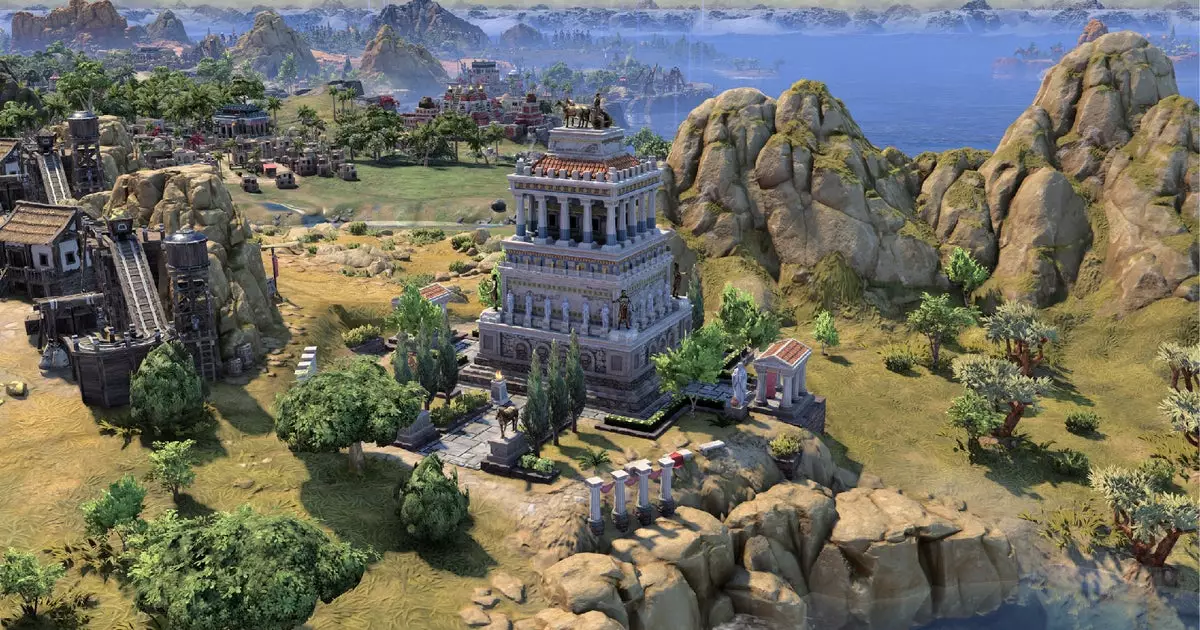The recent release of Civ 7’s update 1.2.4 signifies more than just a routine patch—it marks a pivotal moment in the game’s ongoing evolution, where developers confront the complex tension between innovation and stability. Instead of the usual small tweaks, this update introduces sweeping backend changes intended to elevate the game’s interface and gameplay balance. However, these ambitious modifications come with notable repercussions, especially for the vibrant modding community that breathes life into the game with creative alterations and custom content. Firaxis’s transparency in explaining the update’s impact reflects their awareness of this delicate balance: progress should propel the game forward, but not at the expense of alienating dedicated users.
This update exemplifies how modernization efforts in complex strategy games often lead to collateral damage. Moving the UI to a new system—more reactive and adaptable—necessarily required extensive renaming and restructuring of core files. Such deep, systemic updates inevitably threaten the stability of existing mods, exposing the Achilles heel of even the most meticulous game development processes. Firaxis’s acknowledgment that this caused “more breakage than usual” underscores the challenging reality that innovation in game architecture can be disruptive, at least initially. Yet, their commitment to establishing a robust foundation hints at long-term improvements that could benefit the game’s infrastructure for years to come.
Strategic Balancing and Content Tweaks: A Sign of Maturing Design?
Beyond the technical overhaul, Civ 7’s latest patch focuses heavily on refining its core gameplay mechanics through strategic rebalance. Wonder placement, civ-specific features, and age transition dynamics all receive targeted adjustments designed to foster fairer, more competitive play. Notable among these is the earlier availability of Erdene Zuu, expanding the potential for diverse civilizations to exert influence sooner in the game. Conversely, powerhouse wonders like the Colossus and Monks Mound are now assigned to different civic branches, encouraging players to diversify their strategies rather than relying on cookie-cutter approaches.
Modifications to iconic wonders such as Petra and the Eiffel Tower indicate an evolving understanding of game balance—both substantially impactful, yet carefully nerfed or buffed to maintain challenge and fairness. Similarly, nerfs to the Gates of All Nations and House of Wisdom aim to temper their previously dominant roles, ensuring that victory isn’t skewed toward a single path of cultural or technological dominance. These moves signal a maturing approach to game design where developers seek to diversify strategic avenues rather than relying on a handful of overpowered solutions.
Furthermore, the update’s approach to age transitions demonstrates a nuanced appreciation for continuity and momentum in gameplay. Allowing alliances, gold, and influence to carry over during transitions can encourage more strategic planning over the long haul. It’s a subtle but meaningful shift that reflects an understanding of how players engage with the game’s pacing and narrative flow.
Enhanced AI and Interface: Elevating Player Experience
One of the most compelling aspects of this update is the deliberate effort to improve AI behavior. Firaxis has tackled AI shortcomings, making opponents more challenging and less prone to bizarre decisions—accepting peace treaties impractical under the circumstances, or making irrational moves that defy logical play. This focus on smarter, more realistic AI contributes significantly to maintaining engagement and fairness, preventing the game from devolving into a predictable or frustrating experience.
In tandem with these behavioral improvements, interface enhancements seek to streamline player interactions and make complex decision-making more accessible. Firaxis’s investment in UI revamp not only aids clarity but also prepares the groundwork for future innovations. While this transition has temporarily complicated mod compatibility, it ultimately reflects a commitment to long-term quality of life improvements that benefit both casual players and seasoned strategists alike.
It’s evident that Firaxis is consciously balancing the preservation of existing gameplay excellence with bold steps toward modernization. The decision to provide a rollback option via Steam’s beta branches exemplifies their respect for community needs—acknowledging that change, while necessary, must be navigated carefully. This transparency fosters a sense of partnership between developers and players, even amidst unavoidable disruptions.
Concluding Reflection: A Bold Step Forward with Growing Pains
Overall, Civ 7’s 1.2.4 update embodies the dual nature of progress: the promise of a better, more refined game ecosystem, juxtaposed with the inevitable upheaval that comes with significant technological shifts. The development team’s honesty about the challenges faced and their vision for a more resilient future speaks volumes about their dedication. While the modding community faces temporary setbacks, the broader trajectory is clear—Civ 7 is setting itself up for a future where scalability, balance, and sophistication go hand in hand.
This update isn’t just about patch notes; it’s a declaration that Civ 7 aims to evolve into a more dynamic, intelligent, and accessible strategy experience. For players willing to adapt, it promises richer gameplay and a deeper strategic landscape. For developers, it’s a reminder that innovation must be handled with care—care that respects the passionate community that defines the enduring spirit of strategy gaming. As Firaxis continues to refine and innovate, the true test will be whether these foundational changes can sustain long-term growth without sacrificing the core appeal that made Civ a legendary franchise.

